Mexican Free-tailed Bat
- March 25, 2024
- 0 comment
The Mexican free-tailed bat, scientifically known as Tadarida brasiliensis, is a captivating mammal found across the Americas. With its distinctive long, tapered tail extending beyond its tail membrane, this species is easily recognizable. Preferring warm climates, Mexican free-tailed bats roost in caves, crevices, and man-made structures, emerging at dusk to hunt insects using echolocation. As nocturnal insectivores, they play a crucial role in controlling pest populations, benefiting agriculture and ecosystems alike. During breeding season, elaborate courtship rituals occur, leading to the birth of pups that rely on their mothers for protection and nourishment.

Despite their ecological importance, these bats face threats such as habitat loss and pesticide exposure, necessitating conservation efforts. Beyond their ecological significance, Mexican free-tailed bats hold cultural symbolism in folklore, particularly in Mexican traditions where they represent rebirth and transformation. Through ongoing research and conservation initiatives, efforts are underway to ensure the survival of this remarkable species and its integral role in the natural world.
Mexican Free-tailed Bat Characteristics
| Specification | Description |
|---|---|
| Scientific Name | Tadarida brasiliensis |
| Common Name | Mexican Free-tailed Bat |
| Order | Chiroptera |
| Family | Molossidae |
| Habitat | Caves, crevices, man-made structures |
| Geographic Range | North, Central, and South America |
| Size | Length: 9-12 cm (3.5-4.7 inches) |
| Wingspan | 30-40 cm (11.8-15.7 inches) |
| Weight | 11-14 grams (0.4-0.5 ounces) |
| Tail | Long, tapered, extends beyond tail membrane |
| Diet | Insectivorous, feeds on flying insects |
| Activity | Nocturnal |
| Reproduction | Viviparous, single pup per birth |
| Gestation Period | Approximately 10-12 weeks |
| Lifespan | Up to 12-18 years in the wild, potentially longer |
| Ecological Importance | Significant role in pest control and ecosystem balance |
| Conservation Status | Vulnerable to threats such as habitat loss and pesticides |
| Cultural Significance | Symbolic in folklore, associated with rebirth and transformation |
| Research Focus | Studies on echolocation, migration, and population dynamics |
| Economic Impact | Contributes to agriculture through pest control, potential for bat-watching tourism |
| Interactions | Predator-prey relationships, potential symbiotic associations with other species |
Habitat and Distribution
Natural Habitat
The natural habitat of the Mexican free-tailed bat (Tadarida brasiliensis) encompasses a variety of environments characterized by warm climates. These bats are highly adaptable and can be found roosting in diverse locations, including caves, crevices, and man-made structures such as bridges, buildings, and abandoned mines. They prefer roosts that provide shelter and protection from predators while offering easy access to foraging areas rich in insect prey. Mexican free-tailed bats are known to form large colonies in suitable roosting sites, where they congregate in massive numbers during the breeding season.
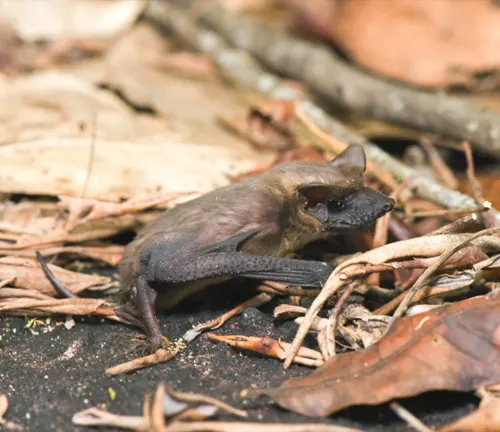

Geographic Distribution
Mexican free-tailed bats have a broad geographic distribution, spanning across North, Central, and South America. They are native to countries such as the United States, Mexico, Brazil, and Argentina, among others. Within these regions, Mexican free-tailed bats occupy a range of habitats, from arid deserts and grasslands to tropical rainforests and urban areas. Their ability to adapt to different environments contributes to their widespread distribution. While they are more commonly associated with warmer climates, Mexican free-tailed bats can also be found in temperate regions, particularly during the summer months when they migrate to cooler areas in search of food and suitable roosting sites.
Physical Characteristics
Size and Weight
The Mexican free-tailed bat is a relatively small mammal, measuring between 9 to 12 centimeters (3.5 to 4.7 inches) in length. They typically have a wingspan of approximately 30 to 40 centimeters (11.8 to 15.7 inches). Despite their small size, Mexican free-tailed bats are agile flyers, capable of swift and efficient flight. In terms of weight, these bats typically range from 11 to 14 grams (0.4 to 0.5 ounces), making them lightweight compared to other bat species. Their compact size and lightweight build enable them to navigate through the air with ease, allowing them to pursue their insect prey with precision.

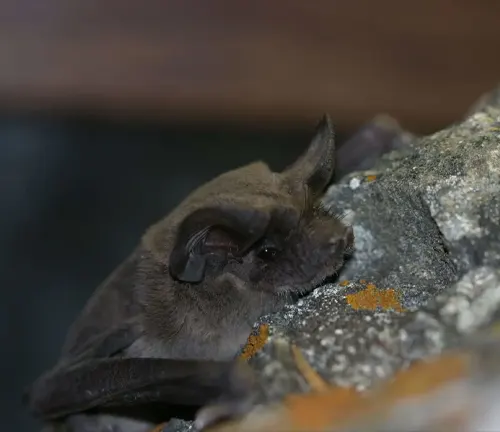
Unique Features
One of the most distinctive features of the Mexican free-tailed bat is its long, tapered tail, which extends beyond the edge of its tail membrane or uropatagium. This characteristic gives the bat its name and sets it apart from other bat species. The elongated tail serves a functional purpose, enhancing the bat’s agility and maneuverability during flight.
Additionally, Mexican free-tailed bats possess other unique adaptations, including specialized wing morphology optimized for fast and efficient flight, as well as sophisticated echolocation abilities that enable them to navigate and locate prey in the dark. These unique features contribute to the Mexican free-tailed bat’s success as a highly specialized and successful aerial predator.
Behavior and Diet
Nocturnal Behavior
Mexican free-tailed bats are primarily nocturnal creatures, meaning they are most active during the night. At dusk, they emerge from their roosting sites in search of food, taking advantage of the cover of darkness to avoid predators and hunt for prey. The cover of night also provides them with optimal conditions for utilizing their echolocation abilities to navigate and locate insects in flight.

Mexican free-tailed bats typically return to their roosts before dawn, where they spend the daylight hours resting and grooming. This nocturnal behavior allows them to efficiently forage for food while minimizing the risk of predation from diurnal predators.
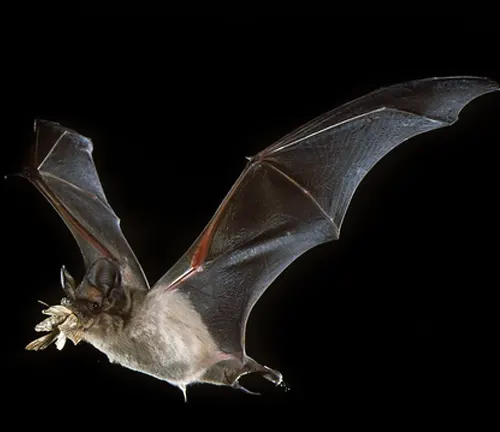
Feeding Habits
As insectivores, Mexican free-tailed bats primarily feed on a wide variety of flying insects. Their diet includes moths, beetles, flies, and other airborne insects that they capture in flight using their agile flying skills and echolocation abilities. Mexican free-tailed bats are adept hunters, capable of pursuing and intercepting prey mid-flight with remarkable precision.
They consume large quantities of insects each night, making them valuable contributors to controlling insect populations in their ecosystems. By feeding on pests such as agricultural pests, Mexican free-tailed bats provide valuable ecosystem services that benefit both natural ecosystems and human activities such as agriculture.
Reproduction and Lifecycle
Mating Behavior
Mexican free-tailed bats engage in elaborate mating behaviors during the breeding season, which typically occurs in the spring and summer months. Males compete for the attention of females through vocalizations, aerial displays, and physical interactions. These displays often involve impressive flight maneuvers and vocal calls to attract mates and establish dominance. Female bats may select mates based on factors such as the quality of the display and the fitness of the male. Once mating occurs, females store sperm internally until fertilization, which typically takes place shortly after mating.

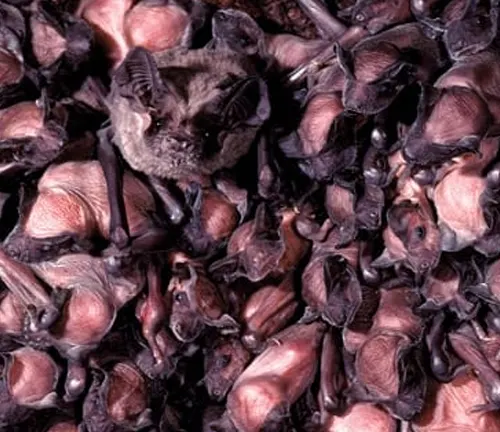
Gestation and Birth
After mating, female Mexican free-tailed bats undergo a gestation period of approximately 10 to 12 weeks. During this time, the fertilized egg develops within the female’s uterus until it is ready to give birth. Female bats typically give birth to a single pup, although twins are not uncommon. The birth usually occurs in the spring or early summer months when food resources are abundant, ensuring that the mother can provide sufficient nourishment for her offspring.
Newborn pups are altricial, meaning they are born in an undeveloped state and rely entirely on their mother for warmth, protection, and nourishment. The mother bat nurses her pup with milk produced by specialized mammary glands until the pup is old enough to begin foraging for food on its own.
Ecological Importance
Role in Ecosystem
Mexican free-tailed bats play a vital role in maintaining ecological balance within their ecosystems. As insectivores, these bats help regulate insect populations, particularly flying insects such as moths, beetles, and mosquitoes. By consuming large quantities of insects each night, Mexican free-tailed bats help control insect populations, preventing them from reaching levels that could become problematic for plants, animals, and humans.
Additionally, the guano (feces) produced by these bats serves as a valuable source of nutrients for plants, contributing to ecosystem fertility and plant growth. Furthermore, Mexican free-tailed bats serve as prey for various predators, contributing to the food web and supporting the survival of other species within their ecosystems.
Pest Control
Mexican free-tailed bats are highly effective natural pest controllers, helping to reduce the populations of agricultural and nuisance pests. By feeding on insects such as moths, beetles, and mosquitoes, these bats help minimize damage to crops, gardens, and forests caused by pest infestations. In agricultural areas, Mexican free-tailed bats contribute to integrated pest management strategies, reducing the need for chemical pesticides and promoting sustainable farming practices.
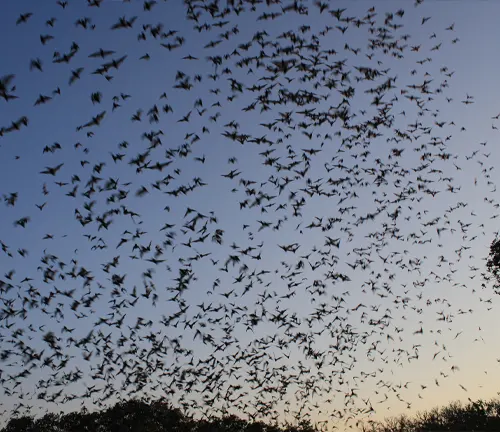
Their voracious appetite for insects makes them valuable allies for farmers and gardeners, providing an environmentally friendly and cost-effective method of pest control. Additionally, by controlling insect populations, Mexican free-tailed bats help mitigate the spread of insect-borne diseases and reduce the nuisance of biting insects for humans and animals alike. Overall, their role in pest control contributes to the ecological balance and sustainability of their habitats.
Conservation Status
Threats
Despite their ecological importance, Mexican free-tailed bats face a range of threats that jeopardize their populations and habitats. Some of the primary threats to these bats include:
- Habitat Loss: Destruction and fragmentation of natural habitats due to urbanization, agriculture, and deforestation reduce available roosting sites and foraging areas for Mexican free-tailed bats.
- Disturbance of Roosting Sites: Human disturbances such as cave exploration, vandalism, and habitat alteration can disrupt bat colonies, leading to abandonment of roosts and stress on bat populations.
- Pesticide Exposure: Agricultural pesticides can negatively impact Mexican free-tailed bats by contaminating their food sources, disrupting their foraging behavior, and causing direct toxicity through ingestion or inhalation.
- Climate Change: Changes in climate patterns, including extreme weather events, altered precipitation patterns, and temperature fluctuations, can affect bat populations by disrupting insect populations, altering roosting habitats, and increasing the frequency and severity of heat stress events.
- White-nose Syndrome: While primarily affecting hibernating bat species, white-nose syndrome is a fungal disease that has the potential to impact Mexican free-tailed bats and other bat species, leading to population declines and mortality.
Conservation Efforts
Efforts to conserve Mexican free-tailed bats and mitigate the threats they face include:
- Habitat Preservation: Conservation organizations and government agencies work to protect and preserve natural habitats, including caves, forests, and grasslands, where Mexican free-tailed bats roost and forage.
- Roost Site Management: Implementing measures to minimize disturbance at roosting sites, such as restricting human access, installing bat-friendly gates, and conducting cave gating projects, helps protect bat colonies and reduce stress on bat populations.
- Pesticide Regulation: Advocacy for pesticide regulation and the adoption of integrated pest management practices in agriculture can help minimize pesticide exposure to Mexican free-tailed bats and other wildlife.
- Public Education and Outreach: Educational initiatives aimed at raising awareness about the importance of bats, dispelling myths and misconceptions, and promoting bat-friendly practices contribute to bat conservation efforts and foster public support for bat conservation.
- Research and Monitoring: Scientific research on Mexican free-tailed bat populations, ecology, behavior, and health helps inform conservation strategies and monitor the effectiveness of conservation efforts over time.
Cultural Significance
Folklore and Mythology
Mexican free-tailed bats have been woven into the fabric of folklore and mythology across various cultures throughout history. In Mexican folklore, bats are often associated with mystical and supernatural beliefs, representing both positive and negative aspects. In some indigenous Mexican cultures, bats are revered as symbols of rebirth, transformation, and the spirit world. They are believed to possess magical powers and are sometimes associated with deities or ancestral spirits.
However, in other cultural traditions, bats have been viewed with fear and superstition, often depicted as omens of death, darkness, or evil spirits. Despite these diverse interpretations, bats hold a prominent place in the folklore and mythology of many societies, reflecting the complex and multifaceted relationship between humans and these enigmatic creatures.
Symbolism
Mexican free-tailed bats carry symbolic significance in various cultural contexts, representing a range of concepts and ideas. Some common symbolic interpretations of bats include:
- Rebirth and Transformation: In Mexican folklore and mythology, bats symbolize rebirth and transformation, representing the cyclical nature of life and the journey between the physical and spiritual realms.
- Eternal Life: Bats are sometimes associated with immortality and eternal life due to their ability to navigate the darkness of night and emerge unscathed, symbolizing resilience and the triumph of the spirit over adversity.
- Mystery and Secrets: Bats’ nocturnal habits and enigmatic behavior imbue them with an aura of mystery and secrecy, symbolizing hidden knowledge, intuition, and the unknown realms of the subconscious mind.
- Adaptability and Flexibility: Bats’ remarkable adaptability to diverse environments and their agile flight represent qualities of adaptability, flexibility, and resourcefulness, inspiring humans to embrace change and navigate life’s challenges with grace and resilience.
- Guidance and Protection: In some cultures, bats are believed to serve as guardians and protectors, guiding travelers through the darkness and offering protection from harm.
- Fertility and Prosperity: Bats’ association with caves, where they roost in large colonies, has led to symbolic interpretations of fertility and abundance, symbolizing the bountiful harvests and prosperity that come from working together in harmony with nature.
Human Interaction
Impact on Human Activities
Mexican free-tailed bats can have both positive and negative impacts on human activities. Positively, they contribute to agriculture by controlling insect pests, reducing the need for chemical pesticides, and promoting sustainable farming practices. Additionally, bats are important pollinators for certain plants, including agave, which is used in the production of tequila. However, bats can also pose challenges for humans, particularly when they roost in structures such as buildings and bridges, leading to conflicts with property owners. Guano accumulation in roosting sites can also cause hygiene and odor issues, requiring management strategies in urban areas.
Conservation Challenges
Conserving Mexican free-tailed bats presents several challenges, including habitat loss and fragmentation due to urbanization and agricultural expansion. Human disturbance at roosting sites can disrupt bat colonies and lead to population declines. Pesticide use in agriculture poses a threat to bat populations by reducing insect prey availability and exposing bats to toxic chemicals. Climate change may also impact bats by altering habitat suitability and insect phenology. Additionally, misconceptions and negative attitudes toward bats contribute to conservation challenges, highlighting the need for education and outreach efforts.
Adaptation and Survival Strategies
Environmental Adaptations
Mexican free-tailed bats have evolved several adaptations to thrive in diverse environments. Their streamlined bodies and elongated wings enable efficient flight, allowing them to cover long distances during migration and foraging flights. Echolocation, a sophisticated navigation system, helps bats locate prey in the dark and navigate complex environments. Bats also exhibit physiological adaptations to withstand temperature fluctuations and maintain energy balance during periods of high metabolic demand, such as migration and hibernation.
Predation Avoidance
To avoid predation, Mexican free-tailed bats exhibit several strategies. Their nocturnal behavior reduces the risk of encountering diurnal predators, such as birds of prey. Roosting in inaccessible locations, such as caves and crevices, provides additional protection from predators. Bats may also form large colonies, increasing the dilution effect and making it more challenging for predators to target individual bats. Vigilance behaviors, such as rapid take-offs and flight maneuvers, help bats evade predators when threatened.
Unique Behaviors
Migration Patterns
Mexican free-tailed bats are known for their remarkable migration patterns, traveling thousands of kilometers between summer breeding grounds and winter roosting sites. Some populations migrate seasonally between northern and southern latitudes, following insect prey availability and environmental cues. Migration routes may span vast distances, with bats navigating using celestial cues, geomagnetic fields, and landmarks. Understanding migration patterns is essential for conservation efforts and requires collaboration between researchers across international borders.
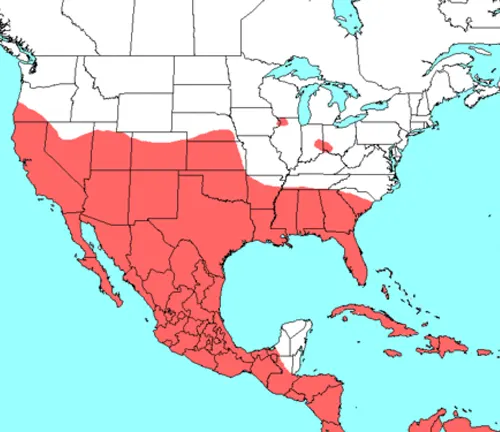
Roosting Behavior
Mexican free-tailed bats exhibit diverse roosting behaviors, utilizing a range of natural and man-made structures as roosting sites. Caves, crevices, and rock shelters are preferred roosting habitats, providing protection from predators and stable microclimates. However, bats also roost in anthropogenic structures such as buildings, bridges, and bat houses. Large colonies may form in communal roosts, where bats gather to rest, socialize, and reproduce. Roosting behavior can vary seasonally, with bats selecting different roosting sites for breeding, hibernation, and migration. Understanding roosting behavior is crucial for conservation efforts and requires monitoring of roosting populations and habitat availability.
Different Species
Brazilian Free-tailed Bat
(Tadarida brasiliensis)
This species is closely related to the Mexican free-tailed bat and shares similar characteristics. It is found primarily in South America, including Brazil, and exhibits migratory behavior.

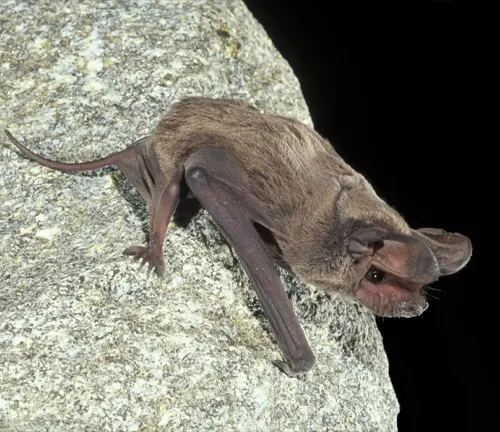
Big Free-tailed Bat
(Tadarida macrotis)
Found in various parts of North and South America, including Mexico, this species is larger than the Mexican free-tailed bat and has a broader geographic range.
Australian Free-tailed Bat
(Tadarida australis)
Native to Australia and parts of Southeast Asia, this species belongs to the same genus as the Mexican free-tailed bat but is found in a different region of the world.
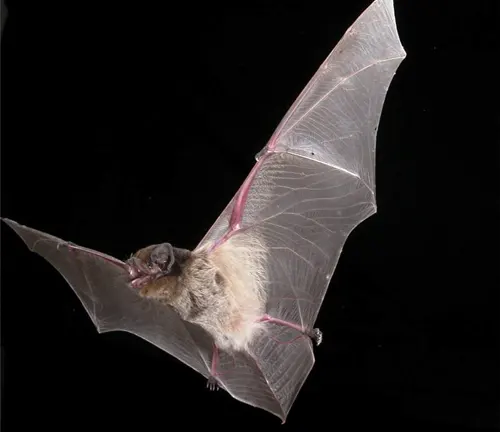
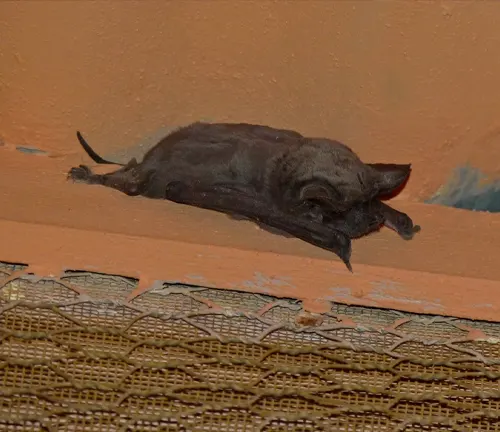
Egyptian Free-tailed Bat
(Tadarida aegyptiaca)
As the name suggests, this species is native to Egypt and other parts of North Africa. It shares similarities with the Mexican free-tailed bat in terms of appearance and behavior.
European Free-tailed Bat
(Tadarida teniotis)
Found in Europe, North Africa, and parts of the Middle East, this species is closely related to the Mexican free-tailed bat and exhibits similar flight and foraging behaviors.

Frequently Asked Questions (FAQs)
- What is a Mexican free-tailed bat?
The Mexican free-tailed bat (Tadarida brasiliensis) is a species of bat native to the Americas, known for its distinctive long tail and agile flight. - Where do Mexican free-tailed bats live?
Mexican free-tailed bats inhabit various habitats, including caves, crevices, and man-made structures, across North, Central, and South America. - What do Mexican free-tailed bats eat?
These bats are insectivores, primarily feeding on flying insects such as moths, beetles, and flies, which they capture in flight using echolocation. - Are Mexican free-tailed bats dangerous?
Mexican free-tailed bats are not inherently dangerous to humans. They typically avoid contact with humans and are beneficial as they help control insect populations. - Do Mexican free-tailed bats carry diseases?
Like all mammals, Mexican free-tailed bats can carry diseases, including rabies. However, the risk of transmission to humans is low with minimal direct contact. - How do Mexican free-tailed bats reproduce?
Breeding occurs during the spring and summer months, with females giving birth to a single pup after a gestation period of approximately 10 to 12 weeks. - Are Mexican free-tailed bats endangered?
While Mexican free-tailed bats are not currently considered endangered, they face threats such as habitat loss, disturbance of roosting sites, and pesticide exposure. - What is the ecological importance of Mexican free-tailed bats?
Mexican free-tailed bats play a crucial role in maintaining ecological balance by controlling insect populations, thereby benefiting agriculture and ecosystems. - How can I attract Mexican free-tailed bats to my property?
Providing suitable roosting sites such as bat houses and avoiding the use of pesticides can help attract Mexican free-tailed bats to your property. - Are Mexican free-tailed bats protected by law?
In many countries, including the United States and Mexico, Mexican free-tailed bats are protected by laws and regulations that prohibit harming or disturbing them. - Can I watch Mexican free-tailed bats in flight?
Yes, Mexican free-tailed bats are known for their spectacular aerial displays, especially during dusk when they emerge from their roosts to forage for insects. - How do Mexican free-tailed bats navigate in the dark?
Mexican free-tailed bats use echolocation, emitting high-frequency sounds and listening to the echoes to navigate and locate prey in the darkness.







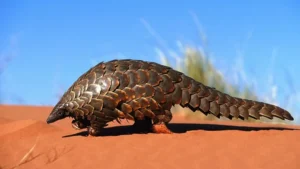






Leave your comment